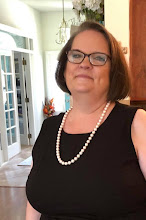 Theme: Palm Sunday and Cleansing
Theme: Palm Sunday and CleansingPalm Sunday, which is a week before Easter, commemorates the entrance of Jesus into the city of Jerusalem as children waved palm fronds. Palm Sunday marks the start of Holy Week.
This painting was created by George & Diana Voyajolu, Iconographers, Kamena Vourla, Greece. The Entry into Jerusalem. Byzantine style, contemporary artists.
Study Guide Assignments
- Read Matthew 21:1-17. This passage references the Old Testament three times. Copy down a quote in at least one of the verses (5, 13, or 16). Then read the Old Testament references, along with other adjacent verses in context: Isaiah 62:11-12, Isaiah 56:6-8, and Psalm 8:1-4.
- When Jesus entered the city of Jerusalem, the first place he went was the temple, where he “cleansed” it of all of the unholy things that were going on there. The temple is a symbol of our own hearts that Jesus wants to cleanse and transform into houses of prayer where he can dwell. Read Psalm 51:1-12 and think about it. Copy down the first verse.
- The hymn “All Glory, Laud and Honor” is about Jesus’ entry into Jerusalem. Read the words and listen to the music on-line at: All Glory, Laud and Honor. Read about the hymn and lyricist at Hymn Story and Theoldulph of Orleans. Write down when and where Theodulph lived and died.
- Click on each of these links to see a classic painting. For each one, tell me who the artist was, as well as about what year the painting was created. Entry Into Jerusalem and Christ's Entry Into Jerusalem. Then look at this stained glass: Triumphal Entry into Jerusalem on Palm Sunday and write at least one sentence about it. Be sure to read the descriptions!
- Choose one thing from today's assignments -- either a Scripture, the hymn, or a piece of artwork -- and write a response paragraph of at least five sentences that describe it and tell of your personal opinions about it.





